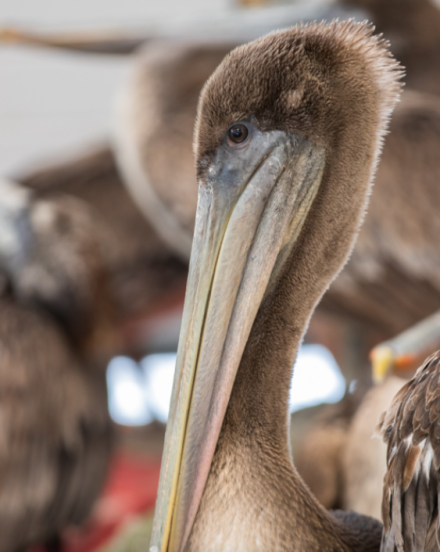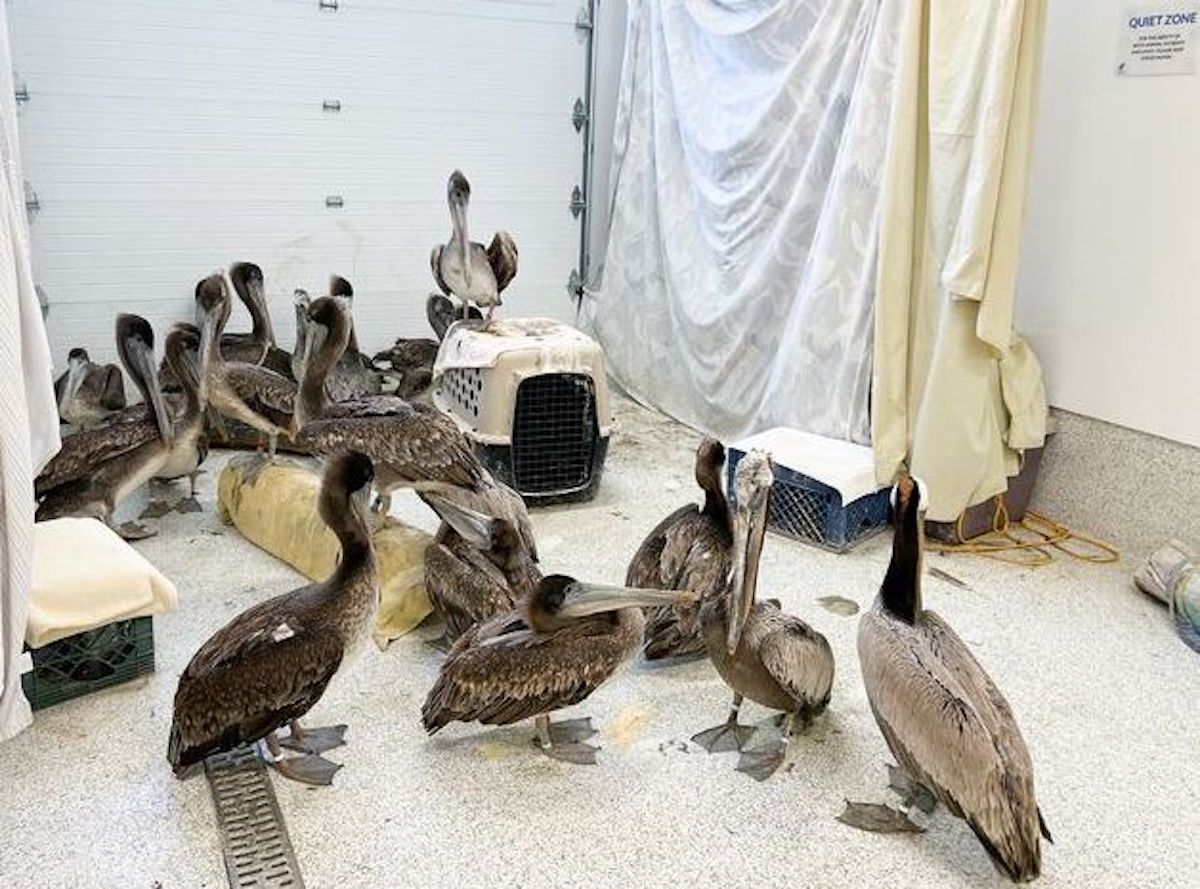Since May 14, the Santa Barbara Wildlife Care Network has been battling an avian crisis, with 140 weak and emaciated brown pelicans arriving at the center by truck as of Wednesday. According to Wildlife Care Network communications manager Lauren Gonzales, 70 percent of those pelicans have managed to survive, with most of them seeing an improvement in their health conditions while under Wildlife Care’s supervision and care. “We’ve been giving them fish, medication, and plenty of saline water,” she said. “Many of the pelicans are now behaving more energetically, which is usually a good sign.”

Of the surviving pelicans, 50-60 of them are housed in Wildlife Care facilities, while others have been sent to partner organizations such as International Bird Rescue. Sick birds continue to arrive by the truckload with no sign of abating. Upon arrival, they must undergo thorough examination and a blood-drawing process. Pelicans have been sighted and rescued from places far removed from their natural habitat, including roads, backyards, fresh waters, and tennis courts; since Saturday, Wildlife Care Network has received around 400 calls from concerned residents all across Santa Barbara and Ventura counties.
S.B. Wildlife Care Network, International Bird Rescue, and the California Fish and Wildlife Department are still investigating the cause of the sudden and bewildering event. The crisis has been exacerbated by its timing during brown pelican mating season, with many of the birds settling in the Santa Barbara Islands and other outlying areas.
Meanwhile, Wildlife Care staff and volunteers have been stretched thin, with many of the latter being trained on the job to examine, feed, handle, and care for the pelicans. “The situation is scary and stressful, due to the sheer volume of birds and all the unknown factors out there,” said Gonzales. “But our staff and volunteers motivate each other and are committed to the task at hand.” Wildlife Care’s Twitter page, which posts regular updates on the situation, sent out a call on Thursday for additional volunteers and donations.
Anyone who finds a pelican in need of help can call the Wildlife Care Helpline at (805) 681-1080, which is staffed from 9 a.m. to 5 p.m. Deceased birds should also be reported, but not touched or handled. According to the Sheriff’s Office, there is no animal care number after 5 p.m. that is guaranteed to have an operator.
Support the Santa Barbara Independent through a long-term or a single contribution.

 on Google
on Google 



You must be logged in to post a comment.